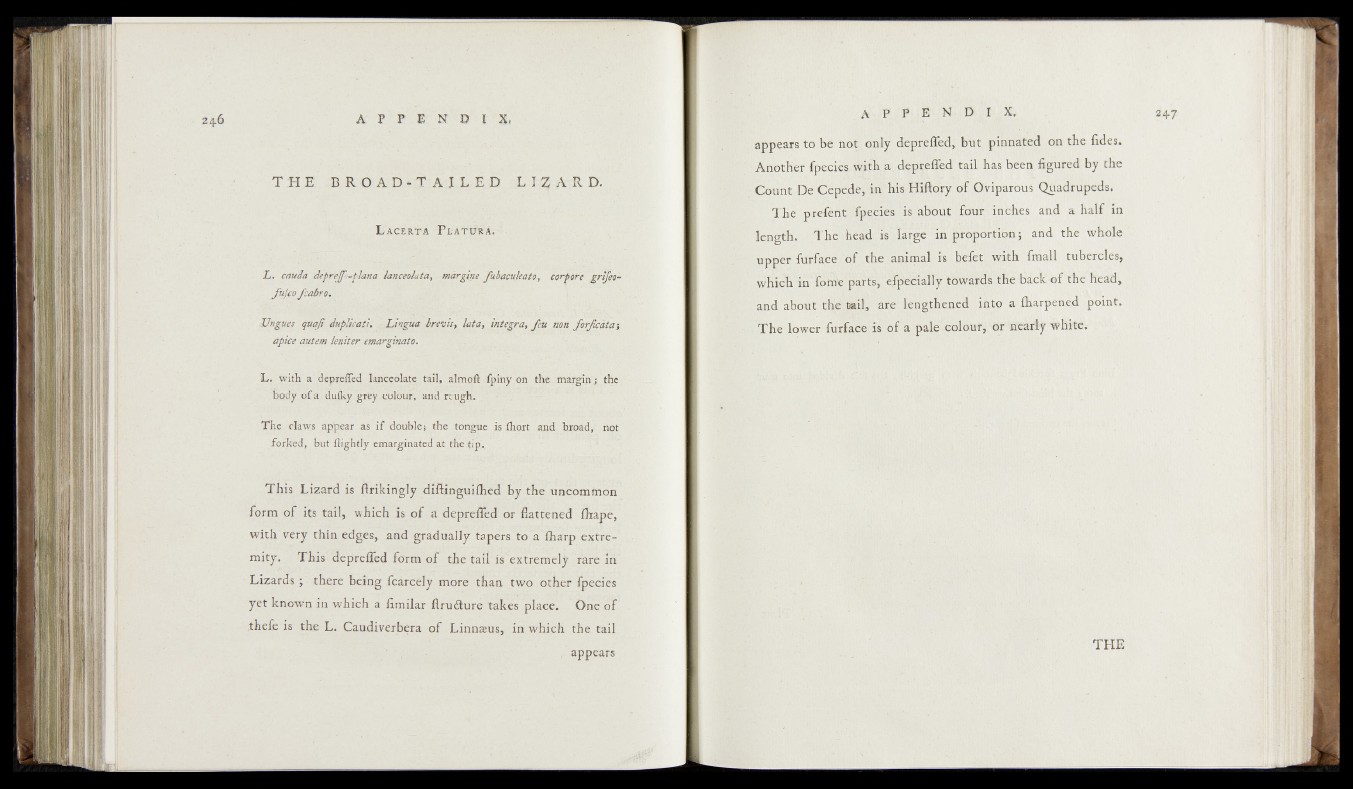
T H E B R O A D - T A I L E D L I Z A R D .
L a c e r t a P l a t ü r a .
L . cauda deprejfo-plana lanceolata, mârgipe fubaculeato, corpore grjjeo-
JuJco fcabro.
Ungues quafi duplicati, ^Lingua 4revis, lata, integra, Jeu non forficéta ',
'àptce autem leniter emarginato. \
L. with a deprcfled lanceolate tail, .almoft Ijpiny on the margin.; the
. body of a dulky grey colour, and rough.
The claws appear as if double; the tongue is Ihort and Irçoâd, not
forKed, but llightly emarginated at the itipii.
This Lizard is ftrikingly diffinguiflied by the uncomfnon
form of its tail, which is o f a depreffed or fattened fhape,
with very thin edges, and gradually tapers to a fliarp extre-*
mity. : This- depreffed form of the tailJis extremely fare inf
Lizards ; there being fcârcëly more than two otter fpecies
y ft known in which a fimilar flruâure takes place. One o f
thefe is the L. Caudiverbera of Linnæus, in which the tail
appears
appears to be not; only depreffed,, but pinnated on the fides.
Another fpeciq^Jvifh a, d'fep^sffed tail h%s beep figured by the
Count De'C^pede,lights HiffdVy of Pvitiarous Quadrupeds.
The preledt • inc“es an<^ a half in
length. T h e ’head is iafge’^in proportion; and the whole
upper furface of the animal'is* b^fet \ykfo fraall tubercles,
which in*foir?e‘p a f t s ^ ^ ^ i a l ly t o W r l f s o f the head,
and,about the tail, ate* lengthened a ih^rpejied point.
The lower fifrfac'e- is’ of a pale-colour*, br nearly whiter